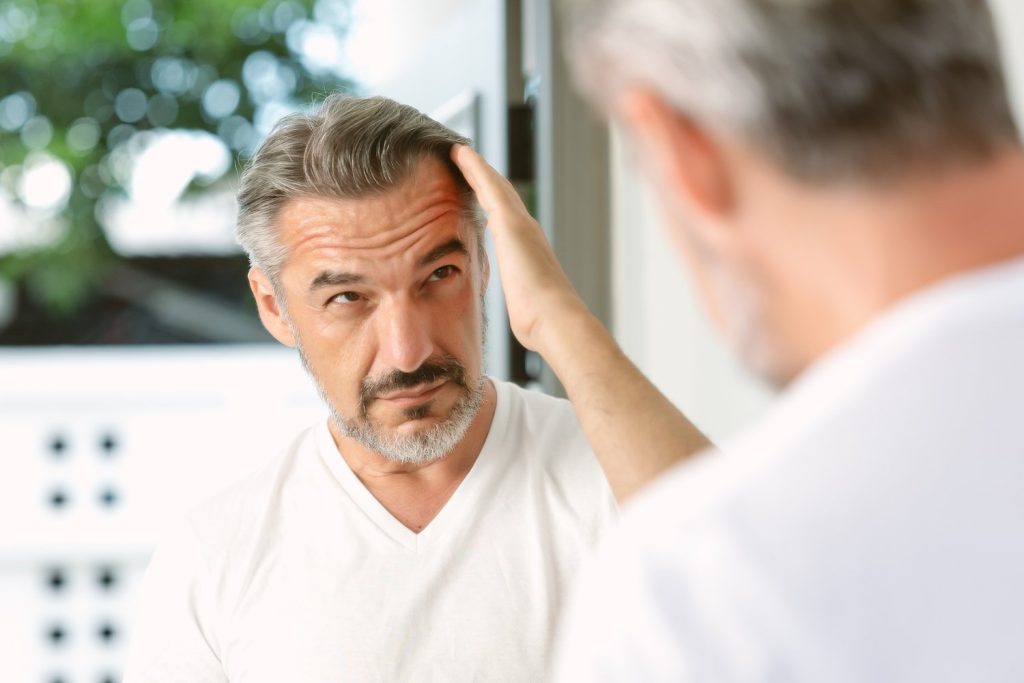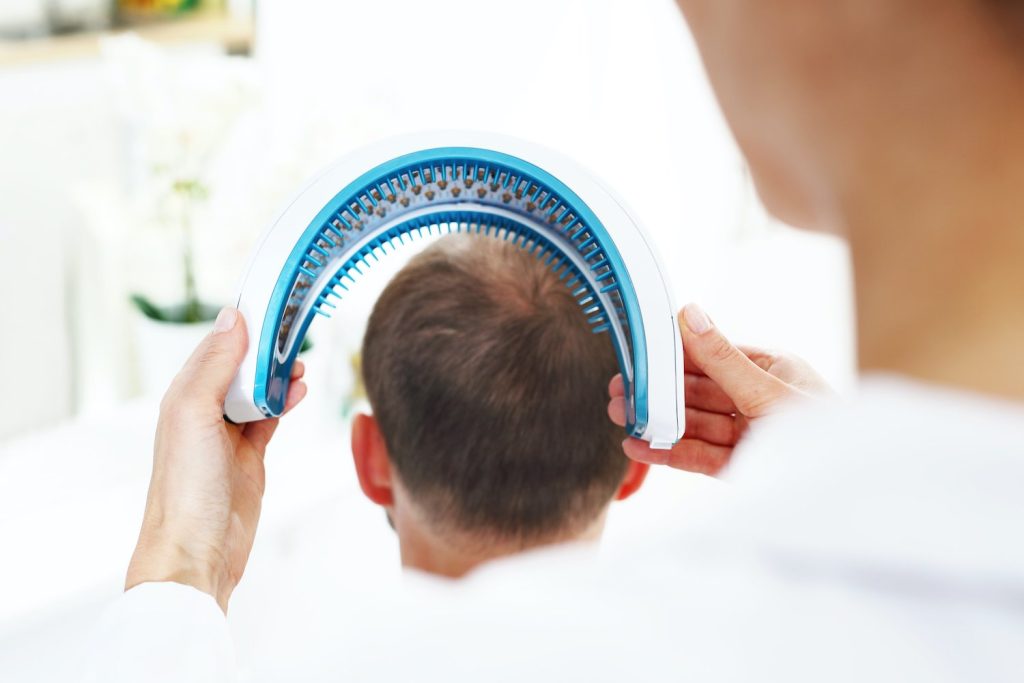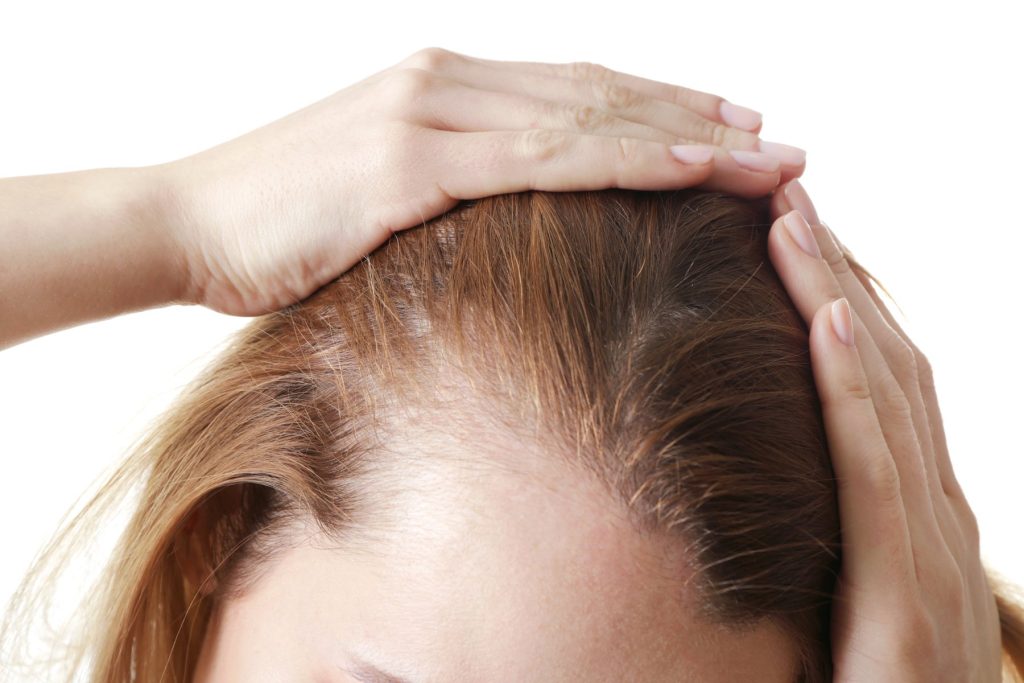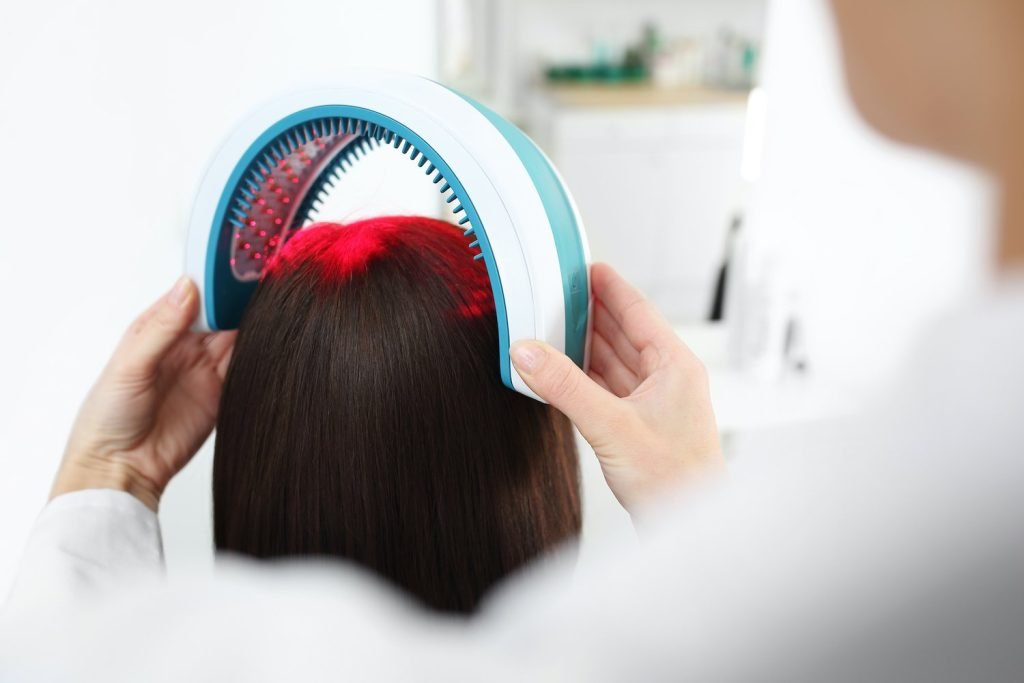- Hairline Clinic - Hair Loss Treatment in Akron and Cleveland Ohio - Schedule FREE Consultation
- 330.285.4815
- CONTACT US
The Norwood Scale and Female Pattern Baldness

Hair loss in women is biologically the same as for men. But the pattern by which that happens is different between sexes – and should be addressed as such.
The very phrase “female pattern baldness” might surprise a lot of people. They may never have seen or noticed a woman with thinning hair. But in fact between a quarter and 40% of all women experience some loss of hair in their lifetimes, giving rise to practitioners who specialize in hair loss solutions for women only. There are at least three reasons this goes unnoticed:
- 1. Women are less inclined to “go with nature” and let the baldness express itself. Rare is the woman who embraces and looks good with a shaved head, therefore the majority of women experiencing hair loss has addressed it already with medication, nutrition, treatments such as laser hair therapy for women, hair transplants, and hair replacement systems.
- 2. When they realize they are losing their hair, women act more quickly at preventing further loss. They notice increasing amounts of hair in the shower drain and are inclined to immediately engage in studying the problem, seeking out professional advice, and taking action.
- 3. Women’s hair loss does not look like men’s hair loss. That “horseshoe” of hair left on men’s heads is not the generalized thinning that happens to most women until later stages.
The similarity between the sexes is that both have a condition known as androgenic alopecia, given it’s based in genetics. (Women might also experience hair loss after giving birth, after an illness involving a high fever – including a Covid-19 infection – or as a reaction to medications.)
Since the 1950s, the chart used to track male pattern baldness has been the Norwood scale (sometimes called the Hamilton-Norwood scale). But for women, the Ludwig and Savin scales are an important variation on that. Each has been used to help women see how far along their hair loss has been.
The Ludwig and Savin scales (they are different, but mostly just in name) show progressive hair loss in three categories, with three progressions within each category. In the first category or phase, hair thinning is just beginning, noticeable at the part of the hair. In the second phase, the thinning at the part gets broader, enough so that the woman might style it to eliminate a part on the top of the crown. In the third phase, that thinning is much more noticeable and begins to mimic the male pattern, a horseshoe shape surrounding three sides of the head with the forehead opening to the balding top.
The biological mechanisms for female hair loss are essentially the same as they are for men. Hair follicles miniaturize, become almost unseen if not disappeared altogether. It’s just the pattern (or lack thereof) that is different.
A visit to a dermatologist to identify the degree of hair loss, in the earliest stages if possible, is recommended. From there, a smart course of treatment can minimize its aesthetic impact and even reverse the loss.
We provide individualized hair loss treatments and solutions for women suffering from female pattern baldness at our hair loss treatment clinics in Cleveland and Akron Ohio.
If you are a woman suffering from female pattern baldness hair loss conditions, we provide industry-leading, individualized hair loss treatments and hair loss solutions to women in Cleveland and Akron, OH. Schedule a FREE confidential consultation and evaluation at our Akron Hair Loss Treatment Clinic or our Cleveland Hair Loss Treatment Clinic by calling 330.633.5225 today!
Hair Loss Treatments
Men's Hair Loss Solutions
Women's Hair Loss Solutions
Men's Hair Loss Solutions
Ready for change? Call our hair loss experts at (330) 285-4815 to schedule a FREE appointment.
HairLine Clinic is an industry leader providing individualized hair loss treatments to men and women experiencing hair loss in Akron and Cleveland, Ohio.










